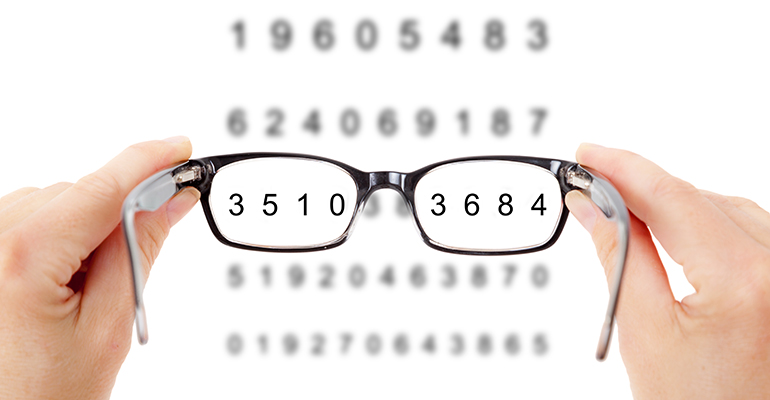How To Know If You Need Reading Glasses?
Sep 01, 2024

Needing reading glasses is very common as we age, this is down to a natural condition called presbyopia which in the US ranges from 83.0% to 88.9% for adults aged 45 years old and above.
Presbyopia is unavoidable but can be corrected with reading glasses.
Our guide below will discuss the common signs of presbyopia, tests to take, and how to find the right reading glasses for your needs.
Do I Really Need To Get Reading Glasses?
Many people avoid getting reading glasses till they can’t read completely.
Still, early signs such as increasing the font size when reading on a smartphone/ computer screen or having trouble distinguishing between colors and small characters can mean you need to get reading glasses.
You can find both reading glasses for women which tend to offer more feminine decorative frames as well as reading glasses for men which typically have a more masculine look.
How Our Eyes Change As We Age
When we are younger, the muscles in our eyes enable us to focus on things close up and far away without any issues due to the flexibility, changing shape to help us focus quickly.
As we get older, this muscle weakens and becomes more rigid, this then causes the pupil size to decrease meaning an overall decline in visual acuity.
This is the same for light, adults over their 60s need three times more light than people in their 20s for comfortable reading.
What Is Presbyopia?
Presbyopia means age-related loss of lens flexibility which affects near vision. It’s a frustrating but unavoidable part of aging that can’t be prevented. You can learn to embrace it by wearing reading glasses or lenses to help correct your vision.
Most people notice presbyopia after the age of 40, if you don’t correct your vision you may experience headache and eye strain.

Common Signs Of Needing Reading Glasses
You might not know if you need reading glasses or not, some symptoms can be clearer than others. Minor uncomfortable symptoms such as rubbing your eyes or even headaches can be indicators you're straining your eyes to read.
These are the most common signs -
Blurry close vision - Since your eyes lose flexibility as you age, they will have trouble adjusting to different distances while focusing on light. This causes blurry vision, especially when reading messages on your phone or a book since they have small print.
Difficulty reading - Presbyopia means even when you hold books and other reading materials at arm's length you can’t see clearly. This is typically around 14 inches, if you're doing this, it’s time for reading glasses.
You are struggling with tasks that need up-close focus.
Increased sensitivity to light and eye strain after near-sight work.
Squinting and rubbing - Naturally, you will find yourself squinting to try and focus better or rubbing your eyes from eye strain if you're starting to develop presbyopia.
Headaches - Since your eyes strain more when your visual acuity decreases this can cause headaches after long periods of close vision work.
Seeing after dark - Even with all the lights on, presbyopia can cause trouble viewing things up close in the dark, this could be the car dashboard for example.
Halos around lights - The ability to focus on light in the retina becomes scattered as we age, this causes blurry and fuzzy vision, especially when looking at lights. Reading glasses can help to correct this.
At Homes Tests For Reading Glasses
To figure out whether or not you need reading glasses, you can try these at-home tests. We also recommend going to the opticians for a professional opinion and prescription.
The newspaper test - Hold a newspaper at a reading distance of around 14 inches. If it appears blurry, take a pair of low-strength reading glasses at +1.00 diopter, and increase strength until it becomes clearer.
The arm's length test - If you're struggling to read at arm's length that’s a clear sign you need reading glasses.
The focus test - Take objects and hold them up closely to your vision, if they appear blurry reading glasses may be required.

How To Know If You Need Reading Glasses Or Prescription Lenses?
If you're struggling with your vision, you might need prescription lenses specific to your vision needs rather than just reading glasses.
If you see well at a distance but struggle to see things up close like small print then reading glasses will help you see up close. You can buy reading glasses from GlassesShop to help with vision correction.
However, if you're finding that your vision is becoming blurry even at a distance it’s best to go to the opticians to get a professional eye exam. They will then give you a prescription and you can buy prescription reading glasses to suit both of your vision needs for distance and close vision issues, these are called bifocal glasses.
How Do I Know What Strength Reading Glasses To Get?
If you’ve figured out you need reading glasses, the next step is knowing which strength of reading glasses you need.
Reading glasses strength is measured by diopters, units to describe the power of lenses. A negative number on your prescription will mean you have nearsightedness while a positive number indicates farsightedness.
The higher the number of diopters the stronger your glasses are, and the closer you see.
Over time you might need to get different pairs of reading glasses as you age. This is because your vision will continue to decline due to your lenses getting stiffer and your natural focus point moving away.
Ages 40-49 - Strength of +0.75 - +1.50
Ages 50-59 - Strength of +1.50 - +2.25
Ages 61 and up - Strength of +2.25 - +2.75
It’s always best to consult an ophthalmologist to get the correct prescription.
Types Of Reading Glasses
Prescription Reading Glasses
Compared to non-prescription reading glasses, prescription ones are often higher quality and have more personalized options while non-prescription options are cheaper and more convenient.
You can use a printable reading glasses size chart to find the strength of the glasses you need. Without wearing corrective glasses, hold it 14 inches away from you and note the smallest text you can read correctly. This can be the starting size for your diopter strength.
Bifocals
These have two viewing zones traditionally separated by a visible line. There tends to be a large viewing area for distance and a smaller area for reading.
Bifocal reading glasses can be available as both women’s bifocal reading glasses and men's bifocal reading glasses and are often quite affordable.
Progressive Lenses
These are no-line multifocal lenses with three different viewing zones for distance, intermediate, and near vision. They have a gradual transition between each zone for comfort.
Progressive reading glasses might be a little more expensive but tend to look the best.
Find The Ideal Reading Glasses At GlassesShop
It’s important to take the time to find your ideal reading glasses since you will be wearing them a lot throughout the day. Consider your face shape, daily needs, and personal style.
We recommend trying on different frame styles to see what suits your face best, you can use our shape detector, and virtual try-on tool, or order up to five frames to try on at home to help you decide.
At GlassesShop we have a full range of reading glasses such as -
Reading glasses for small faces.
Reading glasses for large heads.
Wide frame reading glasses.
Designer reading glasses.
Cute reading glasses.
We also offer various eyeglasses and sunglasses tailored for single-vision, bifocal, progressive, and blue-light lenses. We regularly run offers and have a BOGO (buy one get one free) offer, flash sales, and coupon codes.
There is free shipping over $69 and a 365-day guarantee for your glasses to give you peace of mind.
Happy shopping!